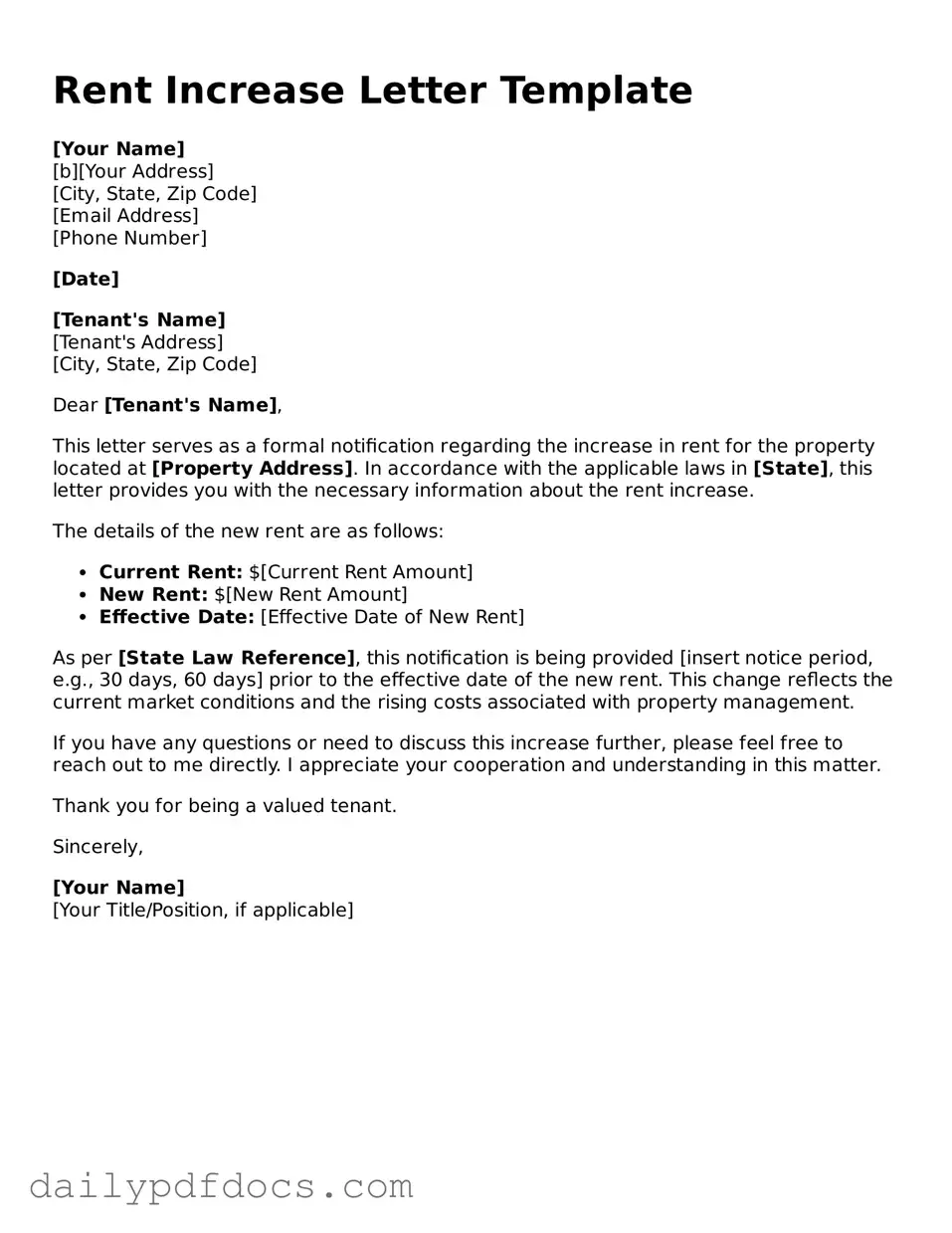Rent Increase Letter Template
[Your Name]
[b][Your Address]
[City, State, Zip Code]
[Email Address]
[Phone Number]
[Date]
[Tenant's Name]
[Tenant's Address]
[City, State, Zip Code]
Dear [Tenant's Name],
This letter serves as a formal notification regarding the increase in rent for the property located at [Property Address]. In accordance with the applicable laws in [State], this letter provides you with the necessary information about the rent increase.
The details of the new rent are as follows:
- Current Rent: $[Current Rent Amount]
- New Rent: $[New Rent Amount]
- Effective Date: [Effective Date of New Rent]
As per [State Law Reference], this notification is being provided [insert notice period, e.g., 30 days, 60 days] prior to the effective date of the new rent. This change reflects the current market conditions and the rising costs associated with property management.
If you have any questions or need to discuss this increase further, please feel free to reach out to me directly. I appreciate your cooperation and understanding in this matter.
Thank you for being a valued tenant.
Sincerely,
[Your Name]
[Your Title/Position, if applicable]
